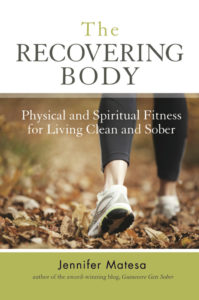Studies have shown several beneficial habits for individuals transitioning from substance use to sobriety: Peer support, meditation, and a healthy diet are some recommendations provided in treatment by addiction specialists. Now, cultural elements and social customs that assist with addiction recovery are the focus of the Treatment Improvement Protocols (TIP) Series.
The TIP Series combines assorted strategies to improve substance use disorder treatment, released by the Substance Abuse and Mental Health Services Administration (SAMHSA), and highlights the existence of subcultures that can hinder addiction recovery within and across different ethnic populations.
“[Drug cultures] can influence the presentation of mental, substance use and co-occurring disorders, as well as prevention,” SAMHSA stated and added that treatment providers need to learn that factors associated with drug cultures can (and should) be replaced by healthy elements that can create a culture of recovery.
SAMHSA Fellow Jennifer Matesa also focused on the elements that promote a culture of recovery, while writing about different ways to achieve physical wellness and sobriety in her 2014 book “The Recovering Body: Physical and Spiritual Fitness for Living Clean and Sober.”
“One of the worst consequences of an active addiction is that we simply don’t care for ourselves,” she said. “I mean that in multiple ways. I don’t mean just taking care of ourselves like getting haircuts, washing or wearing nice clothes, but actually loving ourselves. We don’t do things to love ourselves. By taking care of the body, it trained me to love myself, and that’s a spiritual act – love.”

Hazelden, 2014
Matesa decided to write about how recovering addicts can deal with the damage caused by substance abuse after battling a fentanyl addiction for over three years and detoxing in 2008. Her book combines her real-life experience as a recovering addict but also as an educator, with evidence-based advice, statistical data and scientific findings.
“Once I detoxed, I started enjoying music, enjoying art, enjoying nature, and the beauty of the outdoors,” she said. “It was almost as if the drugs had numbed my ability to appreciate all these things. When my son would come and hug me, I could feel it. I would finally feel connected to his body.”
Addiction treatment programs often concentrate on mental improvements and emphasize spirituality as key to maintain abstinence, Matesa explained, but overlook physical changes that individuals go through during active substance dependence.
Now, she believes that true recovery must address problems of the mind and spirit but also requires changes in the ways individuals relate to their bodies. She breaks down these ways in five areas: activity and exercise; nutrition and fuel; rest and sleep; pleasure and sexuality; and meditation and awareness.
“During my first year of treatment, a sponsor would tell me that no human power could save me, only God could save me,” she said. “So, I would only go to one meeting a week, and I tried to pray my way into recovery. Prayer can be an awesome tool. But my body was really suffering, and I just tried to push through until I ended up relapsing.”
After relapsing and realizing she needed to do something different in order to recover, Matesa decided to start playing tennis and focus on regaining her strength.
“When I quit using drugs, I couldn’t sleep well, and I didn’t have any strength in my body because I didn’t really exercise much while I was using,” she said. “I craved sweets a lot and didn’t eat a very healthy, nutritious diet. I didn’t gain much weight, but I didn’t have strength. I learned that spiritual fitness and physical fitness went hand in hand. The more I took care of my body, the kinder I was to it. The more I nourished it, the better off I was spiritually.”
Addiction affects people differently, and consequently, what works for one person may not work for another, which is why SAMHSA’s protocols highlight… (continue reading)

















